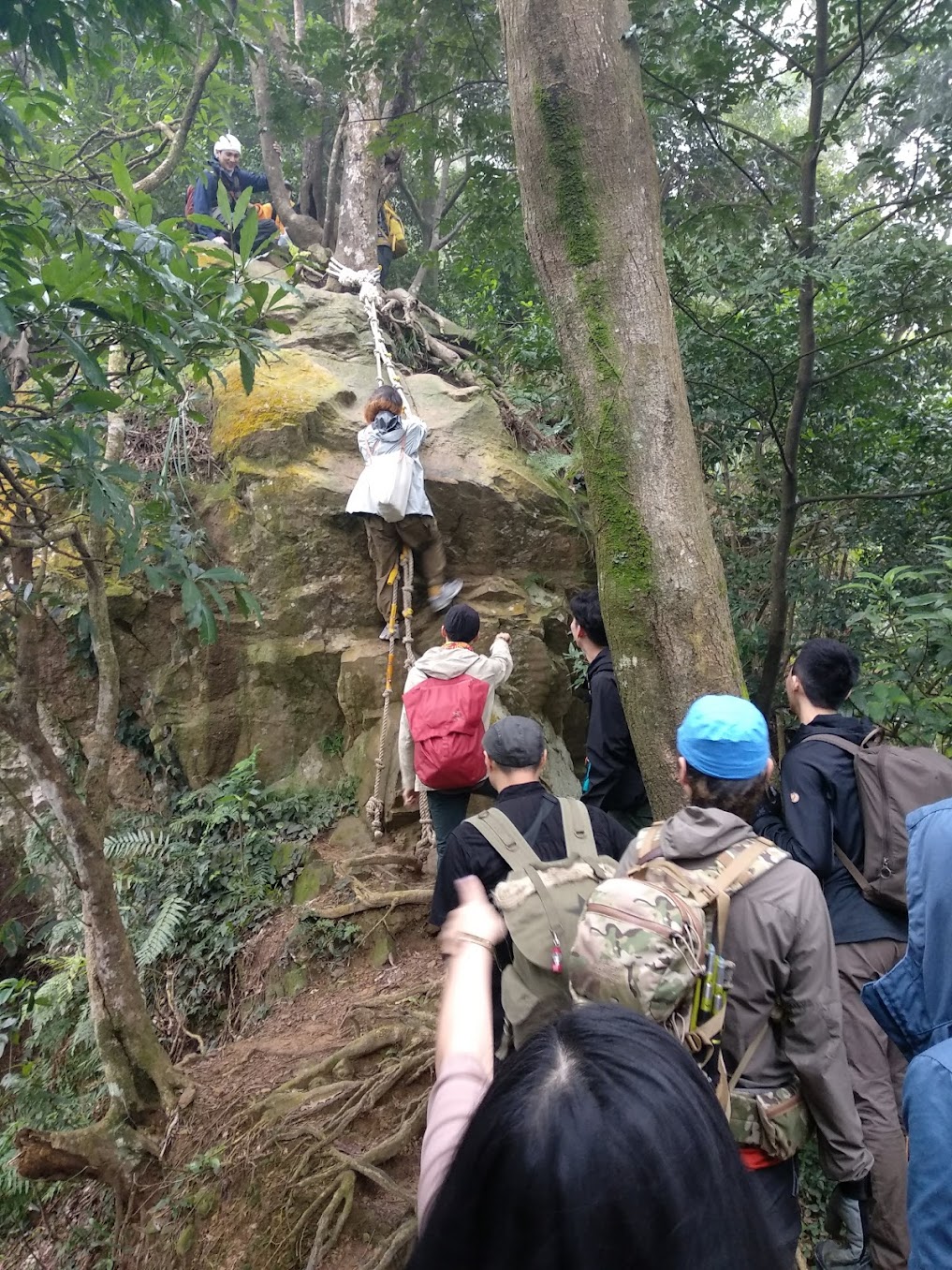After spending most of the last two months away in Thailand, France, and China, it felt good to be back on the island that was beginning to feel like a home away from home. Now that I was in Taipei, Hwadzan could begin the process of applying for a work visa for me. I was excited by the prospect of using the internet to spread traditional Chinese culture to an English-speaking audience. However, destiny had different plans in store. Because Hwadzan was a non-profit, they lacked a certain necessary certificate required to hire foreigners. Full time employment was not to be, but I still wanted to stay in Taiwan.
My experiences over the last few months had opened my eyes to the deep richness of the Chinese culture. Previously, as a teacher in mainland China, I had been quite swept up in the industrialization of this massive, fascinating country. I failed to learn very much about its ancient history and its many philosophies. While I had been an eager student of Mandarin, I never ventured to learn China’s literary language, classical Chinese; it seemed so far removed from this modern age and more difficult than Mandarin, so it didn’t even cross my mind to learn it.
Now, back in Asia, I felt like I was being given a second chance to really learn about the language, philosophy, history, and culture of China. I needed to stay in Taiwan to learn and experience more. To do this, I would need a visa.
Back to School
National Taiwan Normal University in Taipei has a Mandarin Training Center (MTC) where each year hundreds of foreigners from around the globe study Mandarin. I decided to enroll as a student in their 3-month, 15-hour per week intensive course. By enrolling at the school, I would be able to learn more about the language and apply for a student visa. Tuition was also a bargain at 36,000 Taiwan dollars ($1,300 USD) for twelve weeks, fifteen hours a week, which worked out to $7.22 per hour of instruction.
Before classes began, at the beginning of December, I took a placement test to see which level I would be placed in. The test consisted of a reading and listening portion delivered by computer and a spoken assessment with one of the school’s teacher’s. I was enrolled in level 5, the second half of their high intermediate level. By the end of this level, students were expected to know 2,500 words.
Up until this point my study of Mandarin had always been much more self-paced. I had had seven different Chinese teachers over the last 10 years, who were either tutors or training center teachers. Those training centers were quite small though, with not many foreign students. MTC was the first big school where I had ever attended a Chinese class.
Student Life at MTC
What struck me first about MTC was all of the students. Each morning hundreds of students from dozens of countries made their way to the “universal fraternity” building (博愛樓). It was like a mini United Nations. Outside the entrance, many students chatted or ate their breakfast at the nearby outdoor cafe.
Classes consisted of small groups of 5-10 students. My class had seven students who were from Japan, Indonesia, Thailand, Korea, and Australia. Most of them were college age or a year or two older at most; at 33, I was ten years older than most of them. That didn’t stop us from becoming friends though.
For class we used the textbook series, A Course in Contemporary Chinese (當代中文課程), which has six books and is published by MTC. Classes lasted three hours each morning and focused on reading and discussing the text. Our teacher, Ms. Peng, made class interesting by creating activities for us to do that had us practice using vocabulary and sentence patterns from the text.
After class, I would frequently go to the library opposite the “universal fraternity” building. With seven stories, there were plenty of nooks between the bookshelves to hunker down and study in.
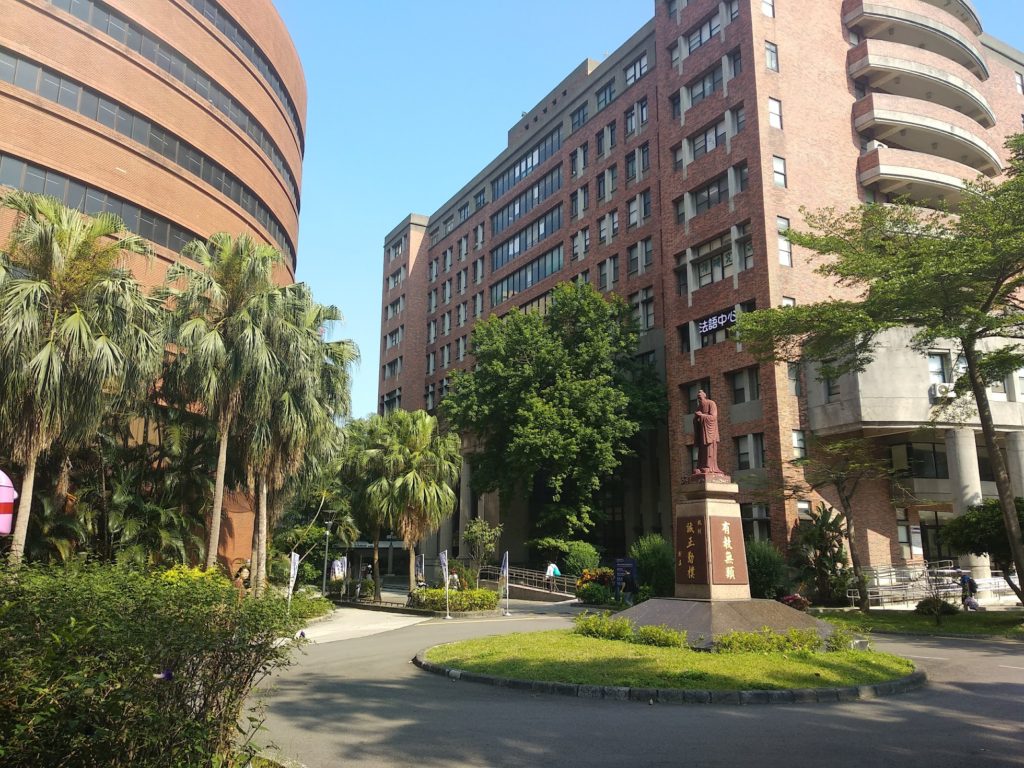
Mandarin Training Center and library at National Taiwan Normal University
Learning Traditional vs. Simplified Chinese Characters
When I began learning Chinese ten years prior, I learned the simplified version of Chinese characters because I lived in mainland China. Taiwan, however uses traditional characters, so that is what we used in class.
Since the early 20th century there have been attempts to simplify or even abolish the use of Chinese characters due to their complexity. The simplified characters in use in mainland China today are in large part thanks to their promotion by the government beginning in the 1950s and 60s. By some estimates, 30% of the 3,500 most common characters in use have been simplified. Some common characters written in traditional and simplified characters are below.
| Traditional | Simplified | Meaning |
|---|---|---|
| 長 | 长 | Long |
| 說 | 说 | Speak |
| 電 | 电 | Electricity |
| 難 | 难 | Difficult |
| 眾 | 众 | Many, crowd |
| 從 | 从 | From, to follow |
Having studied both traditional and simplified characters now, I prefer traditional characters for two main reasons. 1.) Their more numerous strokes make them look better. 2.) They more closely resemble what they mean, whereas the simplified characters have abstracted away much of the meaning. For example, in 說, the left side of the character, 言, looks likes a mouth with words coming out, which suggest its meaning, “to speak.” But in the simplified character 说, this is abstracted away, there is no longer a picture of a mouth with words coming out. Furthermore, the added complexity of traditional characters makes them more memorable, and thus easier to learn.
I really enjoyed my first term of classes at MTC. I was able to learn a lot of the traditional characters and become comfortable using them. Our class got along well with each other and we often hung out together outside of class eating lunch together, exploring Taipei, or celebrating holidays like Christmas and New Year’s. This made our in-class discussions more enjoyable in my opinion. Also, in order to communicate outside of class we mostly spoke in Chinese, giving us extra practice.
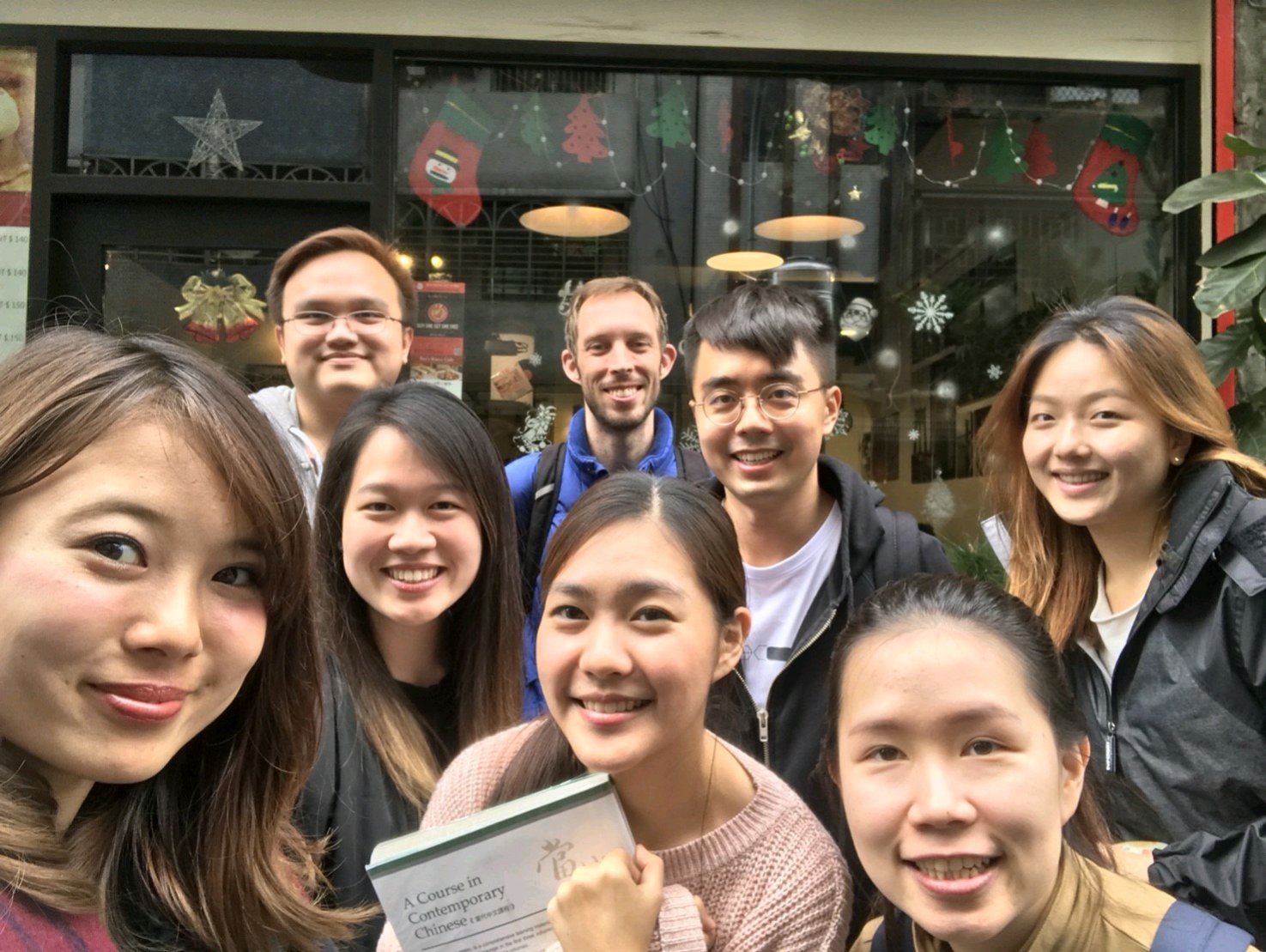
Classmates
In Taiwan, Convenience Is King
I found a nice, clean room near MTC for 11,300 Taiwan dollars a month, about $400 USD. My seven roommates came from all different countries throughout America, Europe, and Asia, and half of them also studied Chinese at MTC.
While not in class or at the library, I spent much of my time at restaurants and coffee shops around campus. Some of my go-to spots for lunch and dinner were Sushi Express, whose self-serve sushi is served on small plates riding on a conveyor belt that loops past all the seats in the restaurant, and Sukiya, a Japanese Gyūdon chain; Gyūdon is a Japanese dish consisting of a bowl of rice topped with beef and onions—they also serve curry, which is what I usually ordered. In Taiwan eating out is relatively cheap at only $3–$6 per meal, making it very affordable and convenient.
At night, after a study session, I liked to slip outside of my apartment and make my way to one of several nearby mom and pop dumpling and noodle restaurants. For just $2 I could fill up on dumplings dipped in peanut sauce or enjoy a plate of fried noodles.
No matter where I was in Taipei, whenever I felt a need for refreshment, coffee, or perhaps an ice cream, there were always a few convenience stores nearby to satiate me. The biggest chains all over the city are 7-Eleven and FamilyMart. In addition to selling plenty of food, drinks, and other daily necessities, you can also book train tickets or send and receive packages at 7-Eleven.
In addition to the MTC library and my apartment, Taipei’s cafes also made for good study spots. Just north of MTC, in the lanes of Dongmen district there were probably a dozen quiet, cozy cafes fit for studying in or working from.

OLO Coffee Roasters—a favorite cafe for studying or working

Ningxia night market egg and scallion pancake—lethal

My apartment building, straight out of a Japanese anime

Apartment living room
Hikes and Bikes Around Taipei
One my favorite leisure activities in Taipei was hiking in the mountains that surround the city. Two of my roommates and I formed a hiking team and together we explored some of the many nearby hiking trails throughout Taipei and New Taipei county. Below are pictures of my roommates and a bit about them.
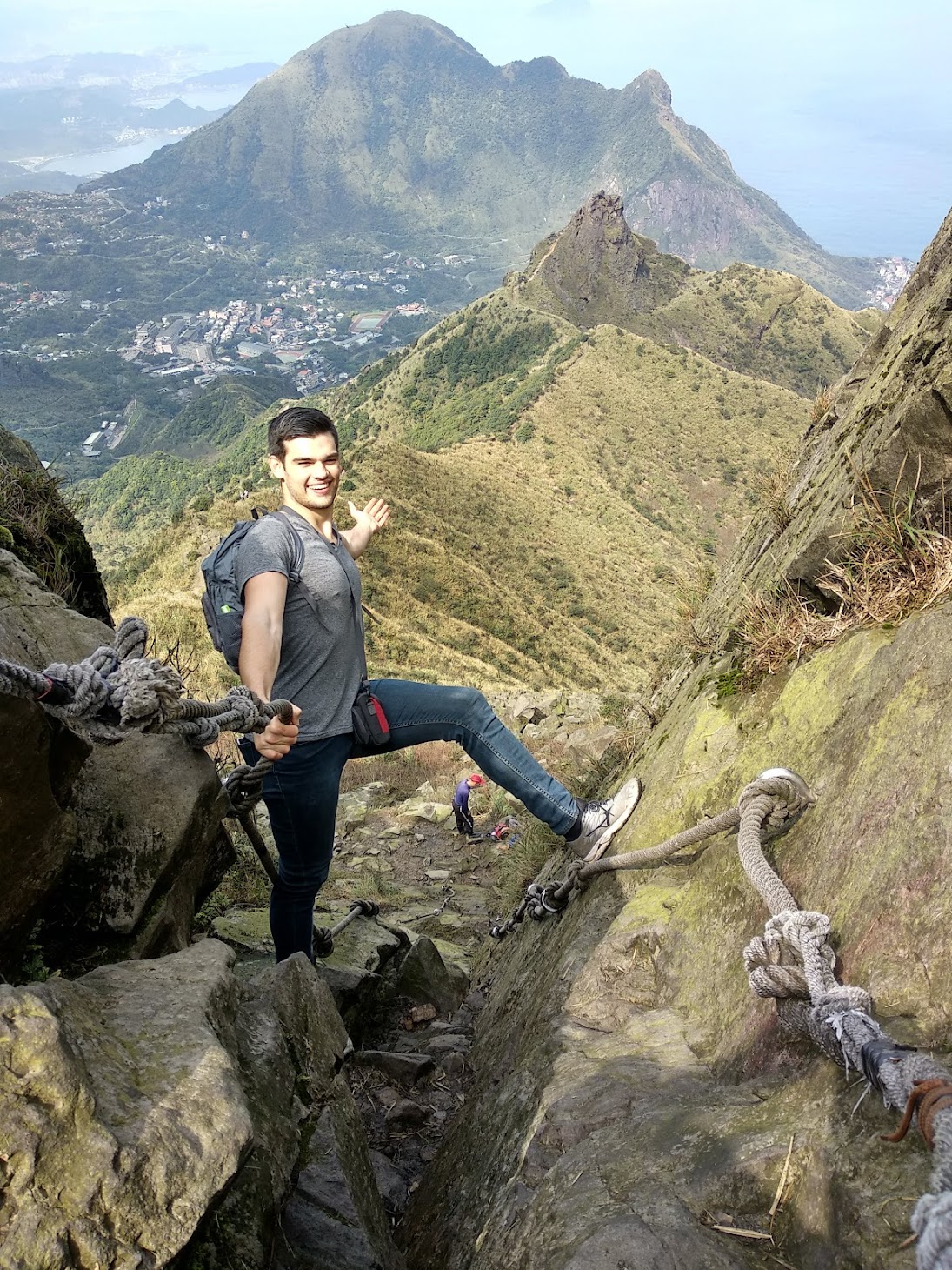
My roommate Shaun was a law student from Australia studying Mandarin in Taipei. He frequently asked me how to say things in Mandarin, like when someone asked him why he didn’t do something, “How do I say, ‘I can’t be bothered’?” I still haven’t thought of a good translation.

My roommate Claire from Korea was also studying Mandarin at MTC. The two of us usually spoke to each other in Mandarin and two years later we hiked Taiwan and East Asia’s highest peak: Jade Mountain. We seem to laugh a lot when we are together, Claire has a good sense of humor.
The most obvious place for hiking in Taipei is Yangmingshan National Park. The mountain park overlooks Taipei and is famous for cherry blossoms, hot springs, and a dormant volcano. Other expeditions took us to Teapot mountain, next to Jiufen, a mountain town just east of Taipei. To the south of Taipei, on the edge of Sanxia district are the craggy peaks of Wuliaojian. The peaks consist of many sheer rock faces with rope railings to aid people in their trekking. And more than one giant rock face necessitate climbing up or down ropes.

Yangmingshan National Park
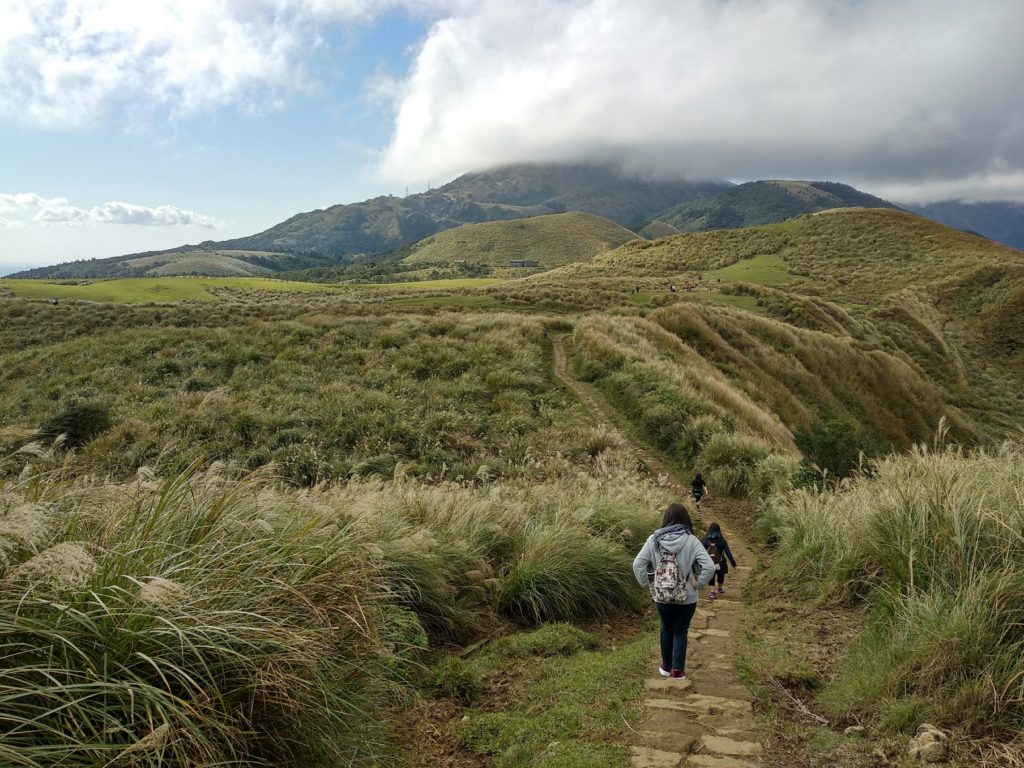
Yangmingshan National Park
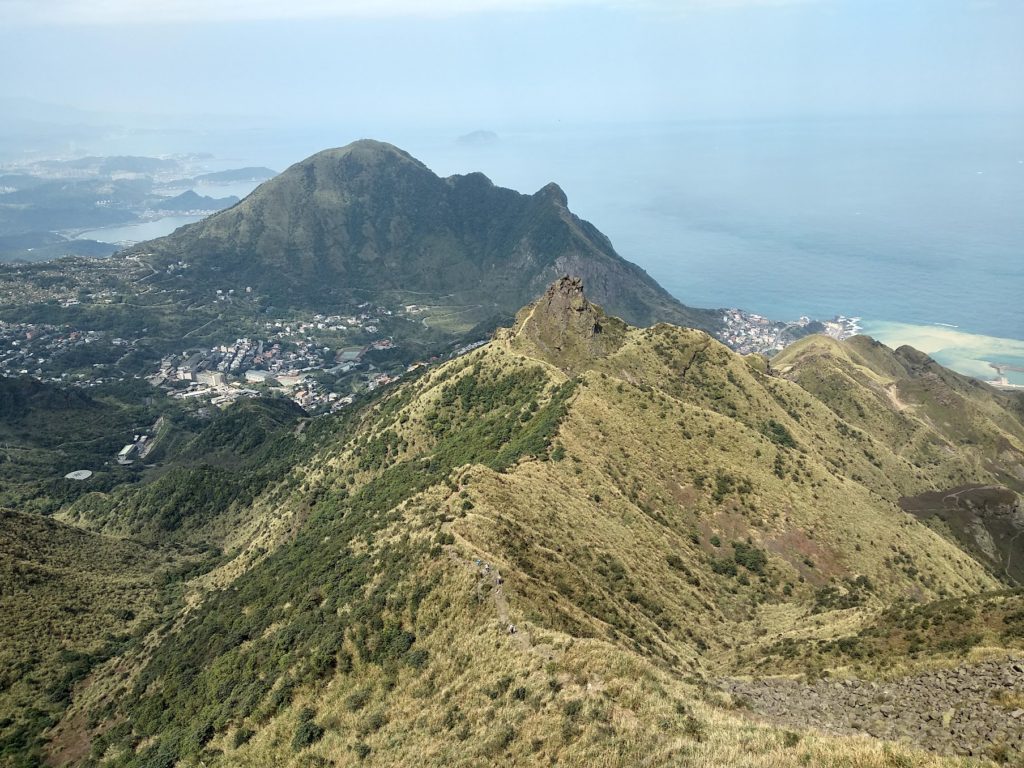
Teapot mountain

Teapot mountain

Wuliaojian
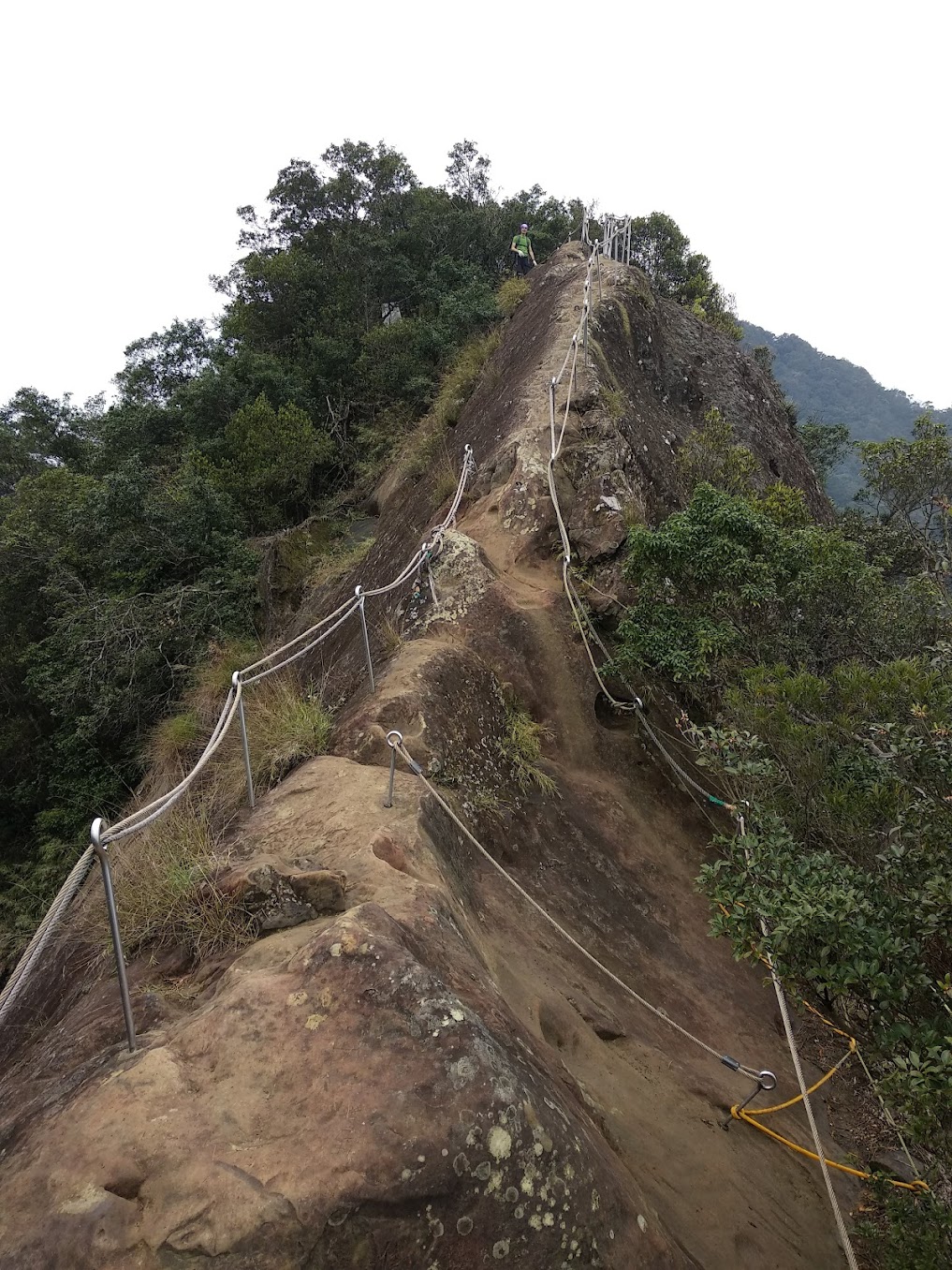
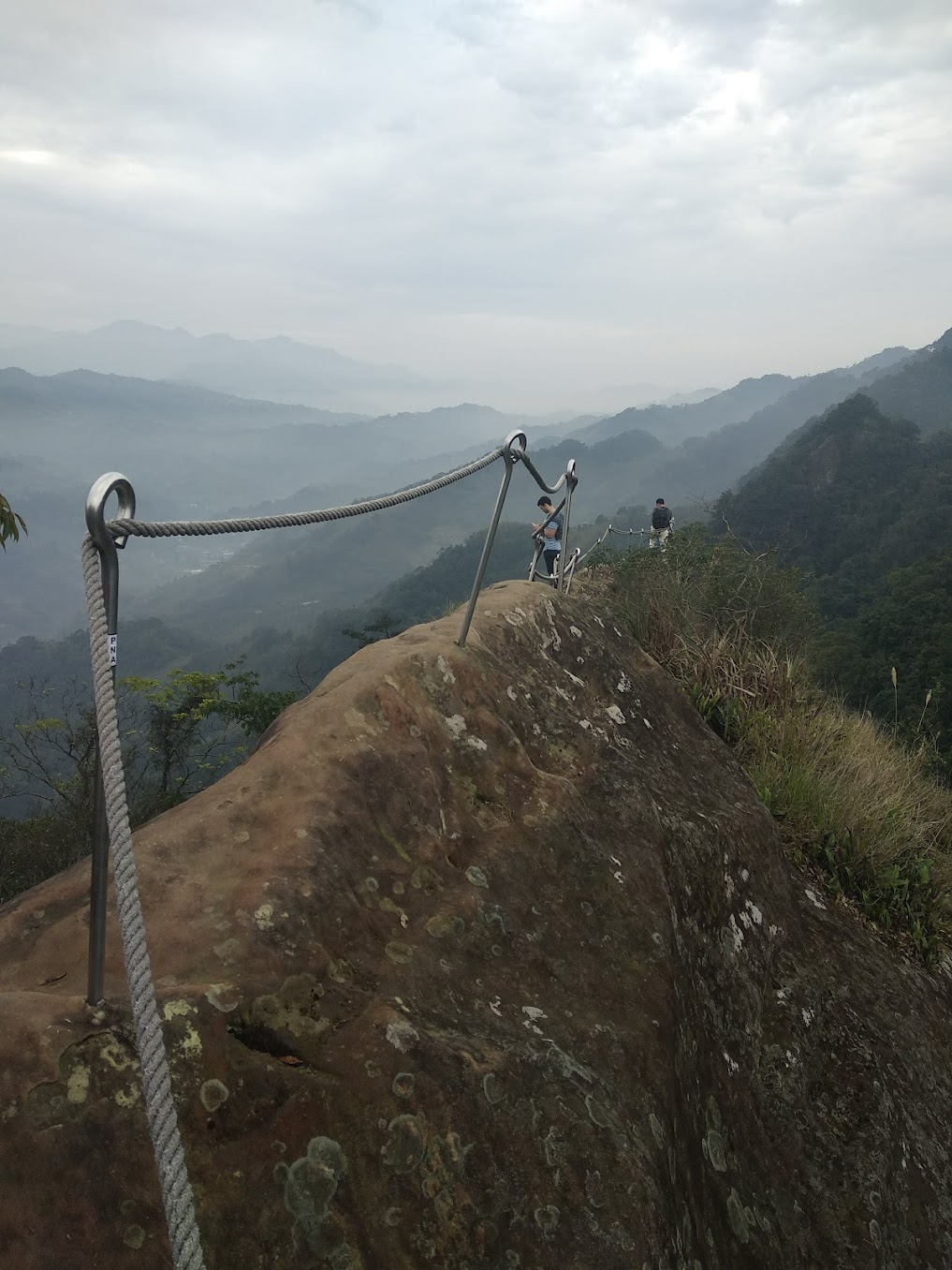
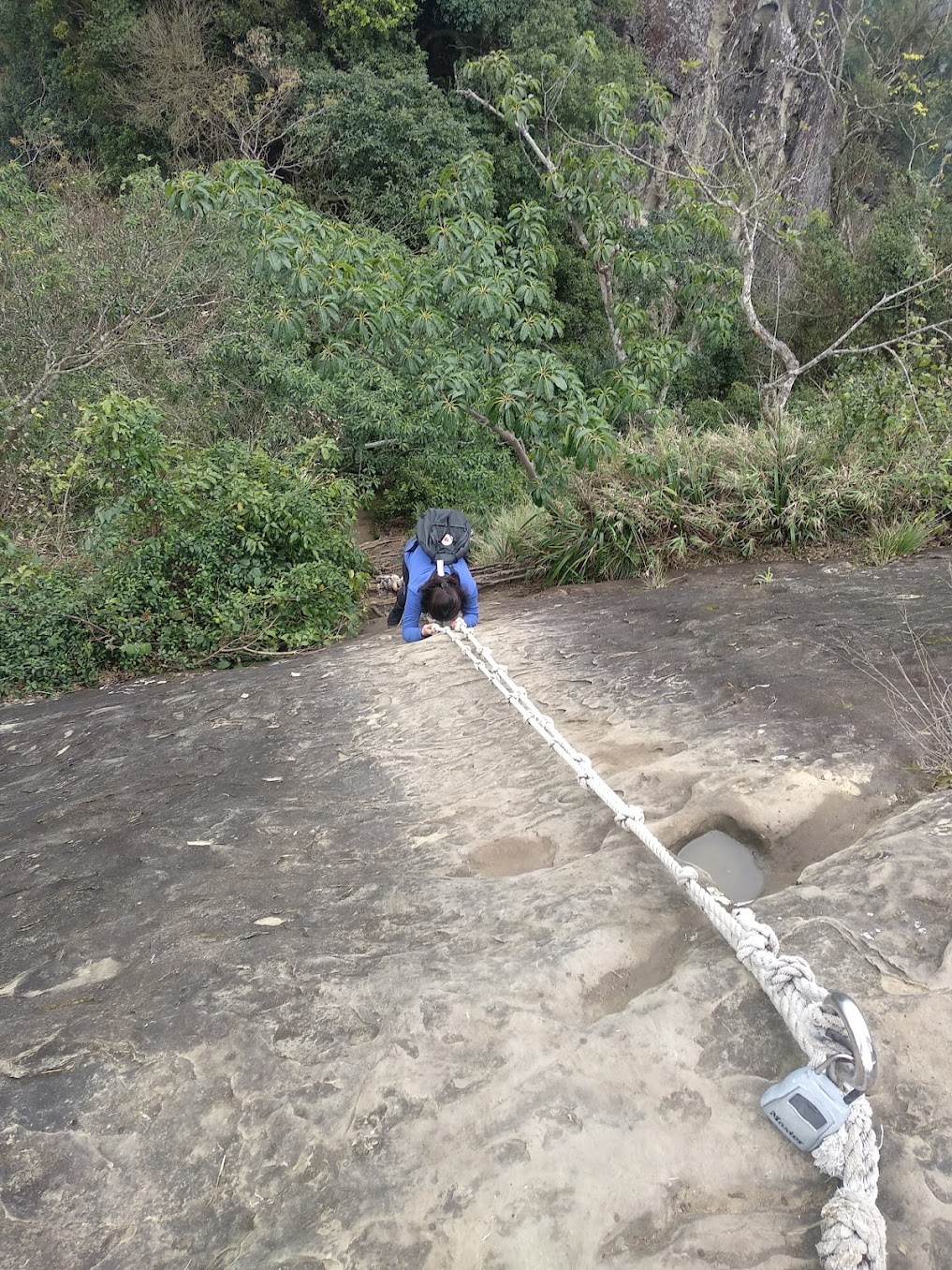
Besides hiking, biking was another good adventure easily had. All around Taipei there are “You Bike” stations, where with the swipe of an EasyCard (Taiwan’s rechargeable transportation card) to pay 5 Taiwan dollars ($0.20), you can pedal the streets and bike trails like a badass. One popular jaunt is to ride along the Tamsui river from central Taipei 20 km (12.4 miles) north to seaside Tamsui district. There are trails and parks lining both sides of each of several rivers that run through Taipei making for good and easy exploration.

You Bikes
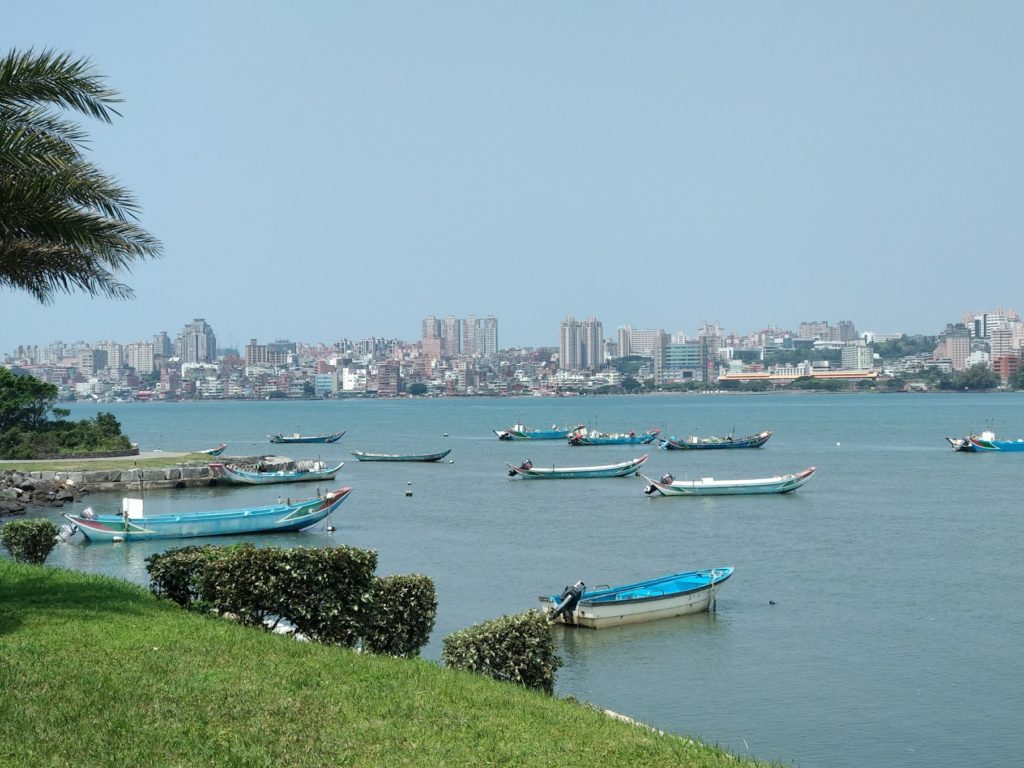
Tamsui (river and district)
Okinawa Visa Run
My friend Jantira, whom I met in Thailand, came to visit me in Taipei during my second month of classes at MTC. She was happy to see me and looked ready to do some exploring. We did some hiking, visited night markets, and ate a dumpling dinner at the famous Taiwanese Din Tai Feng dumpling restaurant, which has branches worldwide.
In order to get my student visa, I needed to leave Taiwan and apply for it at a Taipei Economic and Cultural Office (like an embassy) outside of the country. I decided to get my visa in Okinawa, Japan because I had never been and it was less than hour’s flight from Taipei. So, Jantira and I flew from Taipei to Okinawa for a visa run and mini vacation.
Okinawa prefecture is an archipelago of more than 150 islands between Taiwan and mainland Japan. They are also known as the Ryukyu Islands, and from 1429 to 1879 they were home to the Ryukyu Kingdom; after that they were annexed to Japan. Throughout its history, the Ryukyu Kingdom was a tributary state of imperial China and a vassal state of Japan. In 1945, the U.S. military invaded Okinawa island and fought the Battle of Okinawa. It was a major battle of the Pacific War of World War II, resulting in 160,000 casualties. Today, there are many U.S. military bases located on Okinawa. In fact, about 62% of U.S. military bases in Japan are on Okinawa.
Upon leaving the airport, we were struck by the warm ocean breezes. Although Okinawa is a bit further north than Taipei, it felt warmer. On the train ride into Naha, the capital of Okinawa Prefecture, I was struck by how small the city felt. This wasn’t a bustling, metropolis like Tokyo or Osaka with tens of millions of inhabitants, it was a laid back island city. We made our base at a tiny hostel on the edge of town, near the ferry terminal that connected Naha with the rest of the archipelago.
The main island of Okinawa is home to several castle ruins; on our first day, we visited Nakagusuku castle, which dates back to the 15th century and is a UNESCO World Heritage Site. The castle is located north of Naha, among the various smaller towns on the island. Perched on top of a hill, lie the ruins of this once epic castle. Besides exploring the ruins, visitors get a 360 degree panoramic view of the eastern and western shores of the island. We had great weather that day with clear blue skies and gentle ocean breezes. Growing up in landlocked, Minnesota, I have always appreciated time spent near the ocean.
To reach the castle, we had taken a bus up a hill; in order to lap up the warm weather, we decided to walk back down, along roads nestled in the island’s lush foliage. At one point we passed a golf course and I had to smile. Back in Minnesota no one was golfing in January, but here we were, far from the cold, enjoying a nice walk in the sun in T-shirts. Once we hit the main road, we caught a local bus back to Naha.
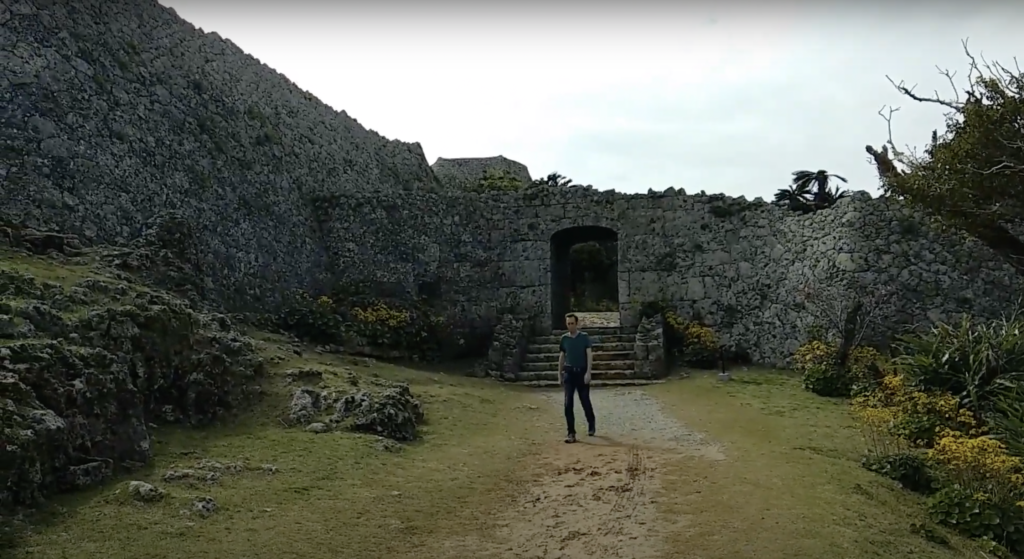
Nakagusuku castle
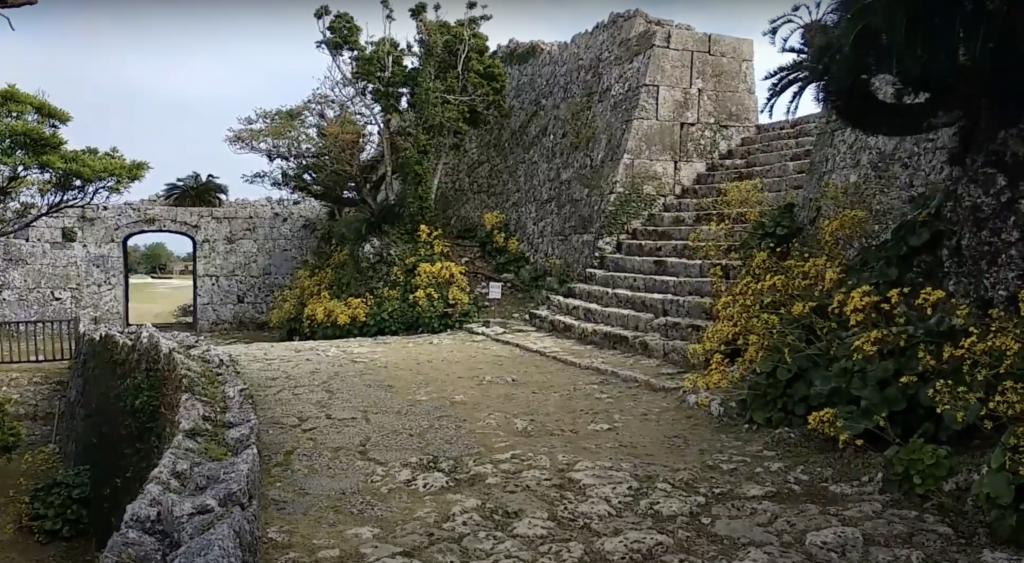
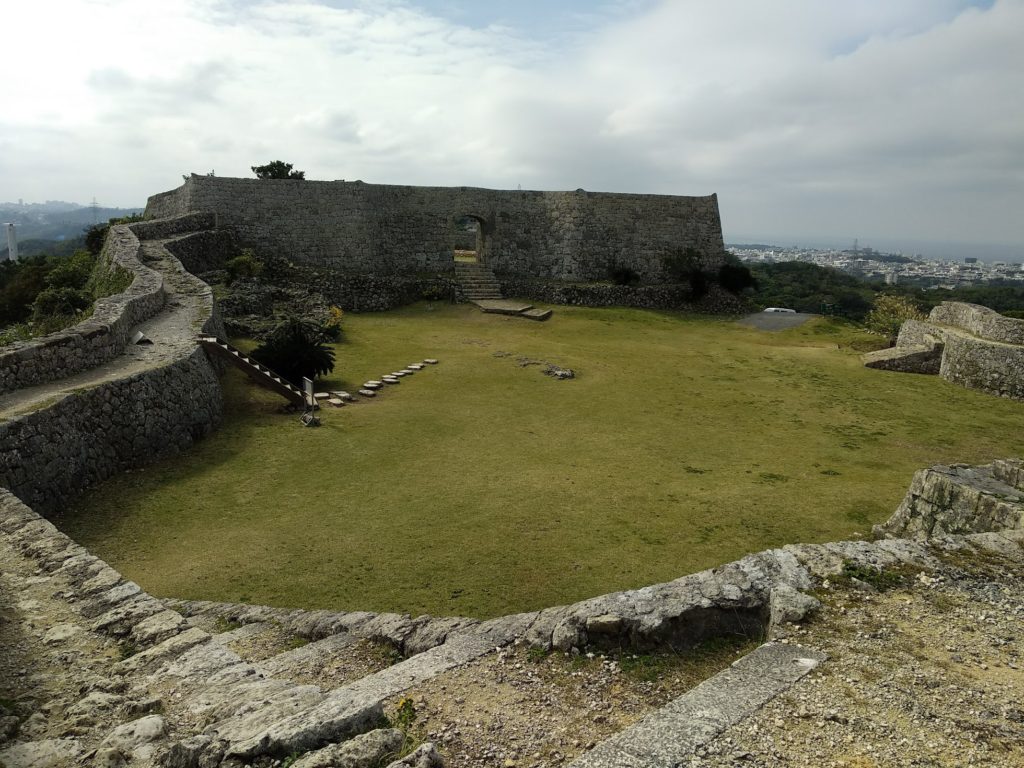
 On our second day, we ate lunch at a well-known Okinawa soba restaurant Jantira had researched called Shuri Soba. Soba is a buckwheat noodle, but refers to many different thin noodles in Japan; Okinawa soba is similar to udon noodles. The noodles are served in a tasty broth, with a couple hunks of pork belly. The soba was excellent…I mean oiishi! (Japanese for delicious)
On our second day, we ate lunch at a well-known Okinawa soba restaurant Jantira had researched called Shuri Soba. Soba is a buckwheat noodle, but refers to many different thin noodles in Japan; Okinawa soba is similar to udon noodles. The noodles are served in a tasty broth, with a couple hunks of pork belly. The soba was excellent…I mean oiishi! (Japanese for delicious)
After lunch, we visited nearby Shuri castle. The castle was built in the 14th century and for 450 years, it was the royal court and administrative center of the Ryukyu kingdom. Unlike Nakagusuku castle, which was in ruins, Shuri castle still retained a large hall and was surrounded on all sides by giant stone walls. At stations around the castle grounds and in the main hall visitors could find chops with ink for stamping various locations in the guide map. Jantira was on a mission to stamp ’em all.
During the Battle of Okinawa in World War II, Shuri castle was almost completely destroyed. Later it was rebuilt and designated a UNESCO World Heritage Site. In 2019 part of the castle was destroyed in a fire, reconstruction is currently underway.
After a couple of days, thanks to the Taipei Economic and Cultural Office in Okinawa, I had my student visa in hand. Jantira and I boarded the Japanese budget airline, Peach, and headed back to Taipei. I really enjoyed Okinawa and hope to visit again one day.

Shuri castle

Shuri Soba restaurant

Inside Shuri Soba
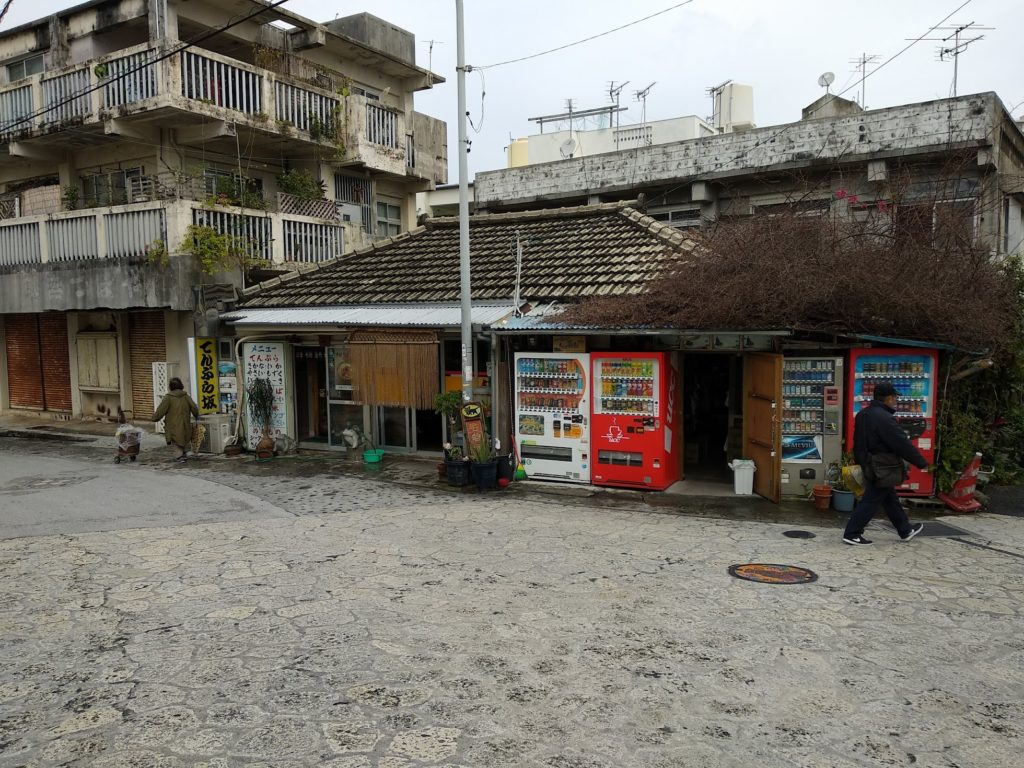
Streets of Naha off the beaten path

Streets of Naha
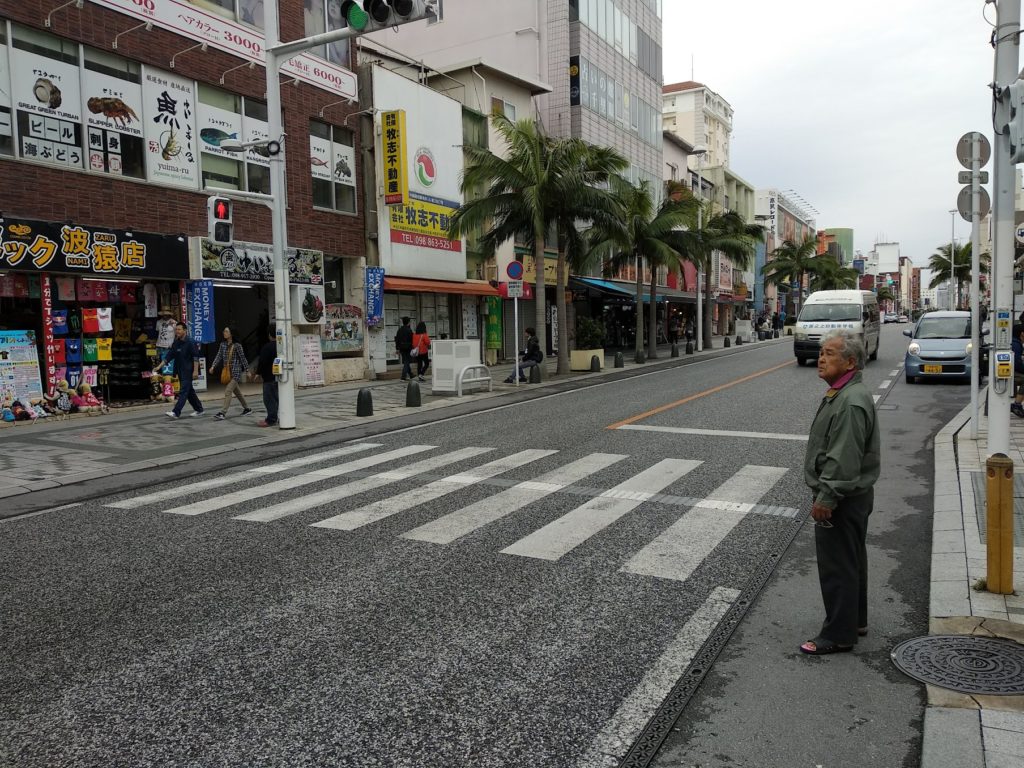
Naha main drag

Cool pottery

Cool t-shirt
Hehuan Mountain and Beyond
Towards the end of the winter term at MTC, at the beginning of February, was the Lunar New Year vacation. It seemed like a good opportunity to do some traveling around Taiwan. My classmate Rika from Indonesia, her friend, his classmate, and her friend were planning a trip to Mount Hehuan, a 3,400-meter peak in central Taiwan. They allowed my classmate Rin from Japan and I to tag along as well. Thus our travel group was formed.
From Taipei, we took a train to Taichung, Taiwan’s second most populous city. On the train I met the other member’s of our party who were from the U.S., Philippines, and Indonesia. My classmates Rin and Rika were about ten years younger than me and they were like my little sisters. After arriving in Taichung, we caught a bus to Mount Hehuan. The ride along mountain roads lasted a couple of hours. I saw next to Bertina, who was from New York, but whose parents were originally from Taiwan. It was the first time I had met another American while living in Taiwan. She and her friend, Cat, the Filipino member of our company, had been living in Taiwan for several years, and from what I gathered, it seemed like they were in it for the long haul.
At lower altitudes Taiwan is snow-free in the winter, but high up in the mountains there was a few inches of accumulation. We arrived at Wuling, the highest paved road in Taiwan, and were greeted by a light dusting of snow. Before heading out to do some hiking in the mountains, we stashed our things at an inn on the slope of the mountain, the Songxue Lodge. Not long after we arrived, Rin started to not feel well. The altitude was getting to her. Inside the lodge, we were able to find an oxygen tank meant to help people suffering from altitude sickness, and with the use of that, thankfully she started feeling better.
The views from the slopes of Hehuan Mountain were glorious, made even more beautiful by the snow. Pictures below.

Hehuan Mountain range

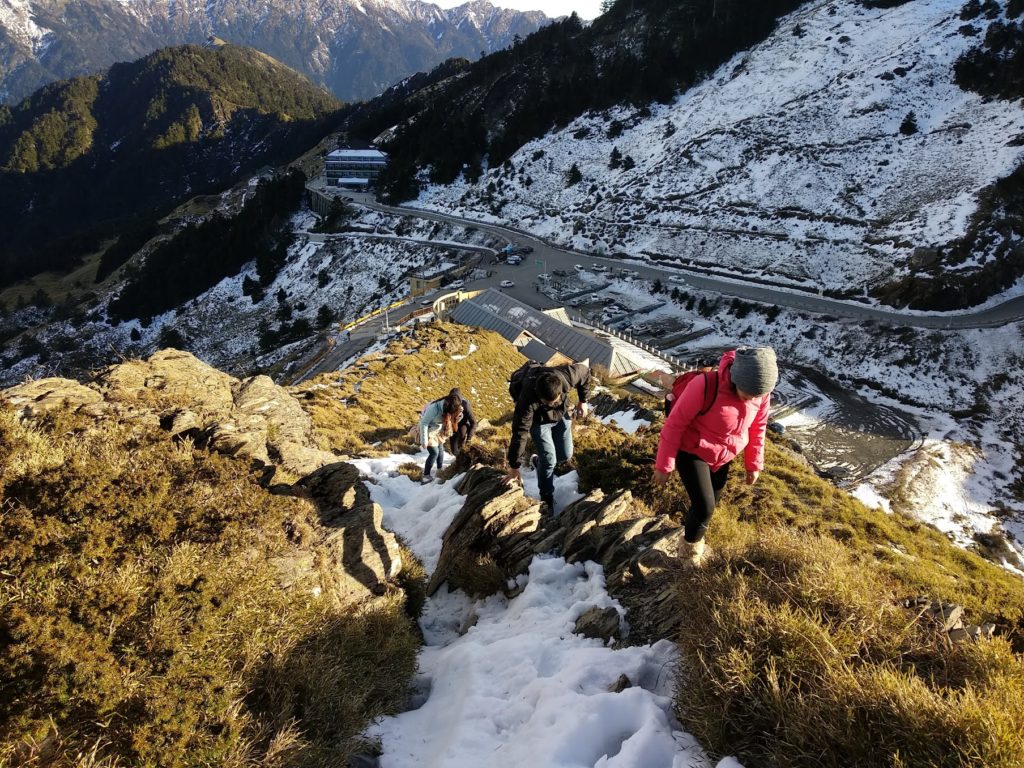

We stayed that night at the inn. All of us slept in sleeping bags on the floor of one big room. Surprisingly, we were one of the only groups staying there that night. In the morning we had hot breakfast at the inn, before continuing our journey.
We caught the bus back down the mountain towards Taichung. About halfway there, Rin, Rika, her friend, and I bid farewell to Cat and Bertina, who I think were headed back to Taipei. The four of us got off the bus and caught a different bus headed for Sun Moon Lake. Sun Moon Lake is the largest body of water in Taiwan. The lake is very picturesque and is surrounded by mountains on all sides. After a few hours hanging out by the lakeside snapping pictures, we piled back on another bus and rode to our last stop of the journey, Taichung.
In Taichung, we stayed the night at a cozy little hostel in the center of the city. After settling in, we chomped our way through Fengjia night market, considered the best night market in Taiwan. The next day we visited a few sites around the city before catching a night bus back to Taipei.
Term’s End, New Year
Shortly after the lunar new year, was the end of that term’s classes at MTC. I had enjoyed my classes and learned a lot about the Chinese language, especially the traditional characters. I had developed friendships with my classmates and roommates and explored a lot of the area in and around Taipei. I got to hang out with Jantira again and visit Okinawa, and now I had a student visa. I could stay in Taiwan for six months, as long as I remained a full time student. However, due to financial concerns, I couldn’t remain a full time student for too much longer. If I wanted to stay in Taiwan long-term I would need to find a job.
